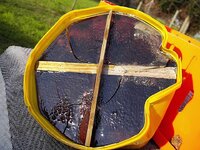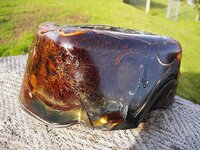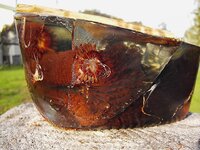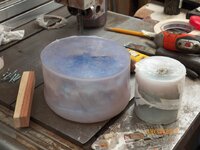vtgaryw
Member
Did a quick search, but didn't turn up anything, although I'm sure it's been covered.
Can I safely accelerate PR curing using heat?
Thanks,
Gary
Can I safely accelerate PR curing using heat?
Thanks,
Gary
Hi Ed - I have not had a problem with brittle blanks. I use the full recommended amount of MEKP (10 drops/oz for siar 41).
Using less (e.g. 3 drops/oz) and then "accelerating" the curing with heat may account for some of the reports you have had.
Other reports of brittle PR are probably due more to tool selection / usage than to curing methods.
All just my opinion, based on my experience. YMMV.
Ed
PR hardens when it is heated. Usually, this heat is created via a chemical reaction from the catalyst, MEKP. People often use heat to augment this process. I suspect that they are doing it to get rid of the stickiness that freshly hardened PR has. (This stickiness is actually a feature of the product.) I occasionally use heat if my pour doesn't harden properly (likely due to old PR or old MEKP or a cold shop).I don't understand the goal of heating it?
Hi Ed - I have not had a problem with brittle blanks. I use the full recommended amount of MEKP (10 drops/oz for siar 41).
Using less (e.g. 3 drops/oz) and then "accelerating" the curing with heat may account for some of the reports you have had.
Other reports of brittle PR are probably due more to tool selection / usage than to curing methods.
All just my opinion, based on my experience. YMMV.
Ed
Hey Ed!
I believe "brittle" is in the eye of the beholder!!
I have had "comments" about blanks being brittle, where I KNOW the artist uses 3-4 drops per ounce. When I experiment with turning a blank, there is no problem.
So, like you, in my EXPERIENCE, nearly all plastics can be turned. Some are easier than others, but you adjust the presentation of your tool and the material "turns into" a pen.
My comment is made to solicit additional feedback---as one customer said to me "Well, you're a professional turner---of COURSE you can turn it". I found this interesting since his previous statement had asserted that the blank was defective, since it could not be turned.
I rely heavily on the "community wisdom" that comes from reading these threads and soliciting more input.
THANK YOU and all others who contribute.
Ed
I don't understand the goal of heating it?
Hey Ed!
I believe "brittle" is in the eye of the beholder!!
I have had "comments" about blanks being brittle, where I KNOW the artist uses 3-4 drops per ounce. When I experiment with turning a blank, there is no problem.
So, like you, in my EXPERIENCE, nearly all plastics can be turned. Some are easier than others, but you adjust the presentation of your tool and the material "turns into" a pen.
My comment is made to solicit additional feedback---as one customer said to me "Well, you're a professional turner---of COURSE you can turn it". I found this interesting since his previous statement had asserted that the blank was defective, since it could not be turned.
I rely heavily on the "community wisdom" that comes from reading these threads and soliciting more input.
THANK YOU and all others who contribute.
Ed
I don't understand the goal of heating it?
Hi Bill - By heating the resin (to 125f-150f) as it cures I can have it ready to turn in a couple of hours. I can easily go from the can (of resin) to a finished pen in less than a day. Although that's not why I do it. I create somewhat complicated blanks that may end up being cast and recast many times. I can do that with heat curing in a day or two rather than a week or two.
Ed





I tried setting some near a wood stove. They received un-even heat. I ended up with deep surface wrinkles. While interesting to look at and not deep cracks into the material, they made the small cross section casts I was trying to do un-usable. I wait for warmer daytime temps and use the proper amount of MEKP.
(yes I was trying to be cheap...)
I was thinking that would be the temp range to go. My toaster oven doesn't do under 200f (maybe I could leave the door open?)
Otherwise I was thinking just a box (non-flammable of course) with a space heater?
